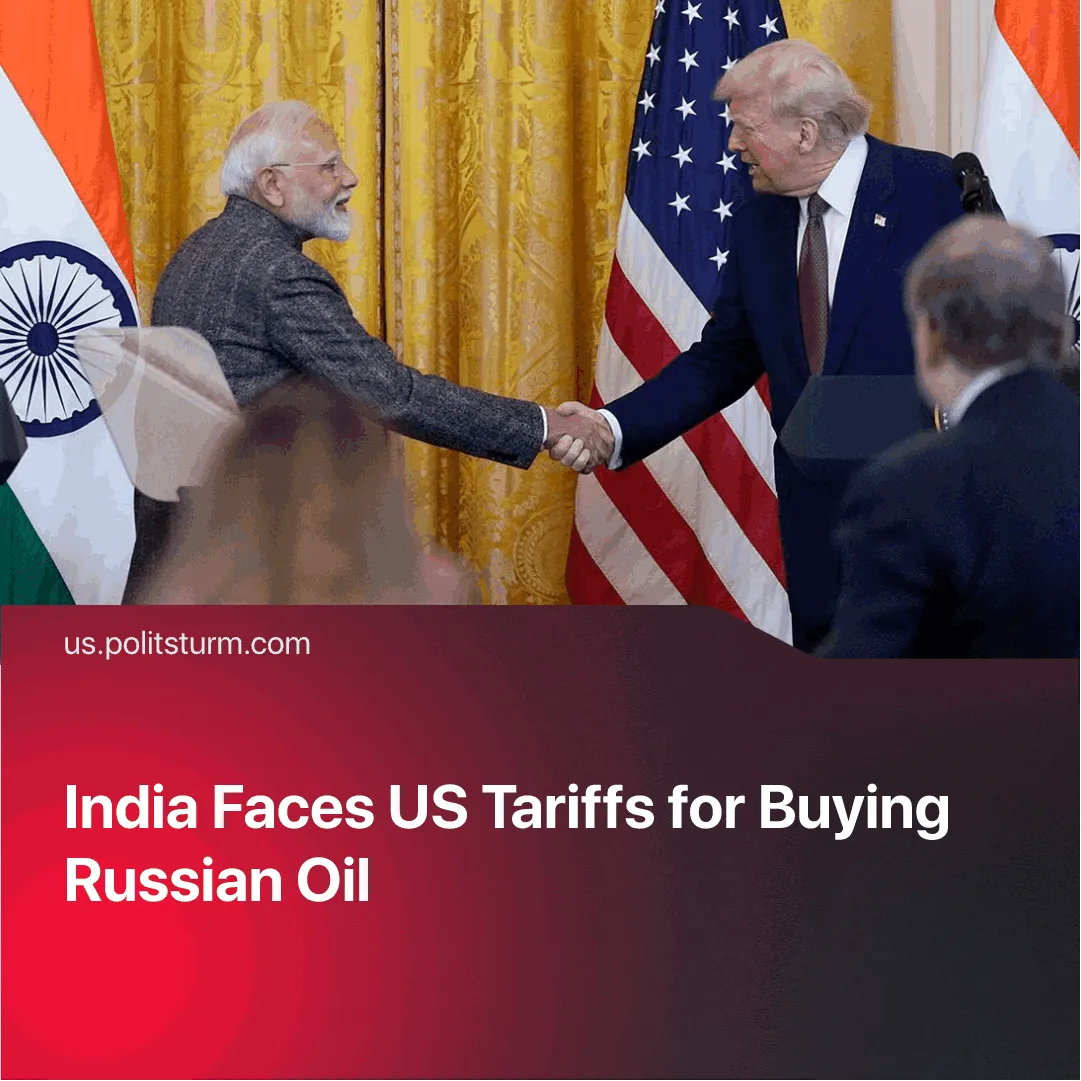India will join US trade talks despite new 50% tariffs over Russian oil, while Modi plans his first China visit in seven years.
Details. The US initially announced a 25% tariff on July 31, as a “reciprocal” measure against what it called India’s high tariffs, trade barriers, and continued Russian oil imports.
► Trump then imposed an additional 25% “secondary tariff” explicitly linked to these oil imports, bringing the total to 50%. The new rate is set to take effect on 27 August.
► In a post, Trump claimed: “India is not only buying massive amounts of Russian oil, they are then, for much of the oil purchased, selling it on the open market for big profits!”
► India’s Prime Minister Modi rejected the move as “unfair, unjustified and unreasonable,” defending Russian oil imports as essential for affordable energy.
► The Indian Ministry of External Affairs noted that Western countries, including the US and EU, continue trading with Russia in commodities ranging from liquefied natural gas to Uranium. It vowed “India will take all actions necessary to protect its national interests”
► Despite the dispute, Indian officials confirmed that the sixth round of trade talks with the US will go ahead on 25 August — two days before the tariffs take effect. Modi simultaneously confirmed the first visit to China in 7 years, set for the 31 August SCO summit, just days after the tariffs are due to take effect.
Context. US–India bilateral trade reached $212 billion in 2024. Still, tensions over high Indian tariffs and market access persist, including the loss of duty-free access under the US Generalised System of Preferences after the US claimed India failed to provide “equitable and reasonable access” to its markets.
► through 2024/25, India’s imports of Russian crude have soared from $1.1 billion to $50.2 billion. In 2023–24, $19.2 billion worth of refined fuels from this oil were exported to the EU.
► In 2024/25, India–China trade hit $127.7 billion, with a $99.2 billion deficit driven largely by imports of electronics and machinery for industrialisation.
► India currently maintains strategic autonomy, not falling into full dependence on either the US or China, leading to disputes with both sides.
► Peace talks between Trump and Putin are planned for 15 August.
Important to Know. The US is using the tariff to pressure India into aligning with its sanctions against Russia and drawing it away from BRICS, while securing tighter control over global oil and energy flows in the run-up to inter-imperialist conflict.
► India’s denunciation of US–EU hypocrisy serves its own propaganda purposes, portraying its Russian oil trade as a defence of “national interests” and “affordability” rather than a move to protect its own capitalist profits.
► High Indian exports of refined Russian oil to the EU mean the tariff also serves US aims of reducing EU purchases of Russian-origin energy, deepening the bloc’s dependency on American supplies.
► If India resists and no comprehensive deal is achieved, the tariffs could push it further toward BRICS partners, undermining US influence in South Asia — a key strategic theatre, as evidenced by the recent India–Pakistan conflict.


